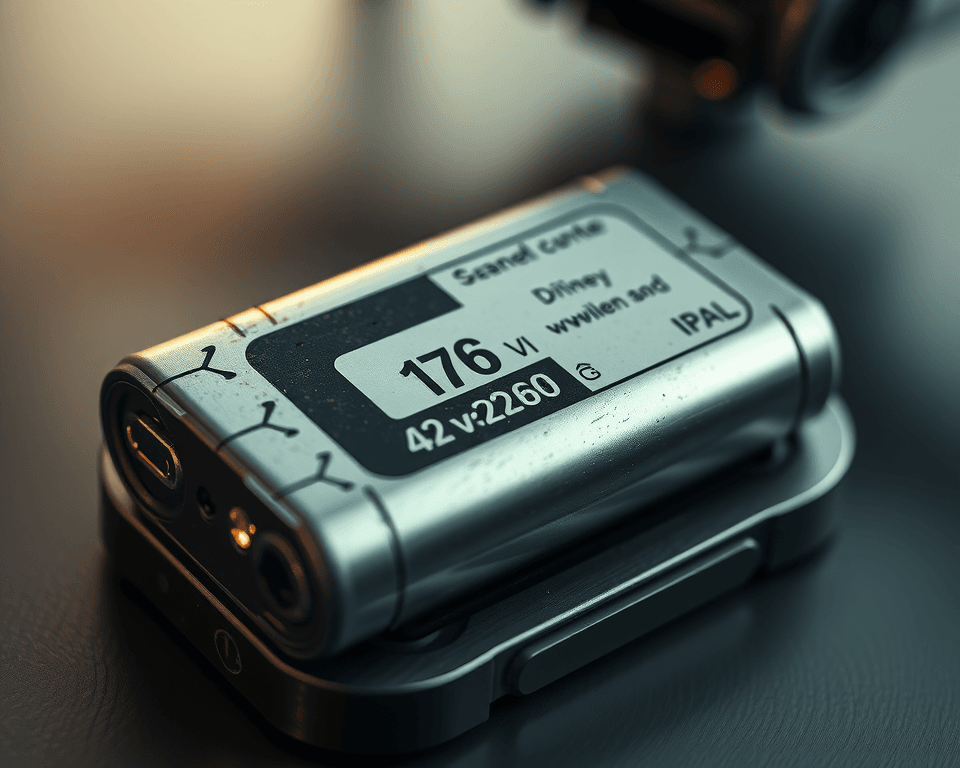Drones have revolutionized various fields, from photography and videography to agriculture and infrastructure inspection. However, a drone is only as good as its battery. Understanding common drone battery problems, how to maximize their lifespan, and safety precautions is crucial for every drone pilot. This guide will explore the ins and outs of drone batteries, helping you keep your drone in the air longer and safer.
Understanding Drone Batteries
Drone batteries are the unsung heroes powering these flying machines. Typically, drones utilize Lithium Polymer (LiPo) or Lithium-Ion (Li-Ion) batteries due to their high energy density and relatively light weight. These characteristics enable drones to stay airborne for a reasonable amount of time. Knowing the basics of these batteries is the first step in addressing potential problems.
Types of Drone Batteries
- Lithium Polymer (LiPo): Known for their lightweight and high power output, LiPo batteries are popular in many drones. However, they require careful handling as they can be prone to fire if damaged or improperly charged.
- Lithium-Ion (Li-Ion): Li-ion batteries are heavier but more stable and durable than LiPo batteries. They are often preferred when safety and longevity are more important than maximum performance.
- Nickel Metal Hydride (NiMH): Less common in modern drones, NiMH batteries are safer and more environmentally friendly than LiPo batteries. However, they offer less energy density, resulting in shorter flight times.
- Nickel Cadmium (NiCd): An older technology, NiCd batteries are rarely used in modern drones due to their “memory effect,” which reduces capacity over time if not fully discharged before recharging.
Key Battery Terminology
- Voltage: The electrical potential difference, measured in volts (V). Higher voltage can mean more power.
- Capacity: The amount of energy the battery can store, measured in milliampere-hours (mAh). Higher mAh means longer flight times.
- C-Rating: Indicates the discharge rate, showing how quickly the battery can release its energy safely. A higher C-rating is suitable for more demanding flight maneuvers.
- Charge Cycle: One full charge and discharge of the battery. Battery lifespan is often measured in charge cycles.
- Cell: Individual units within the battery pack. LiPo batteries often consist of multiple cells connected in series (to increase voltage) or parallel (to increase capacity).
Common Drone Battery Problems
Like any rechargeable battery, drone batteries are subject to a range of problems. Recognizing these issues early can save you from unexpected crashes and costly replacements.
Reduced Flight Time
One of the most common complaints is a noticeable decrease in flight time. Several factors can contribute to this:
- Battery Age: As batteries age, their capacity naturally diminishes.
- Usage Habits: Frequent high-current discharge and deep discharges can accelerate capacity loss.
- Environmental Factors: Extreme temperatures can significantly impact battery performance. Cold weather reduces capacity, while excessive heat can cause permanent damage.
- Internal Damage: Physical trauma from crashes or improper handling can damage the battery’s internal structure, reducing its efficiency.
Failure to Charge
A battery that refuses to charge can be frustrating. Potential causes include:
- Faulty Charger: The charger itself might be defective. Try using a different charger to see if the problem persists.
- Damaged Battery: Internal damage or corrosion can prevent the battery from accepting a charge.
- Connection Issues: Loose or corroded connections between the battery and charger can disrupt the charging process.
- Firmware Issues: Sometimes, outdated or corrupt firmware on the drone or battery can interfere with charging.
Swelling or Bulging
Swelling is a serious sign of internal battery damage and indicates the battery is unsafe to use. Causes include:
- Overcharging: Exceeding the battery’s voltage limit during charging can cause it to swell.
- Overheating: High operating temperatures or direct exposure to heat can lead to swelling.
- Physical Damage: Impacts or punctures can compromise the battery’s structure, leading to swelling.
- Manufacturing Defects: In rare cases, manufacturing flaws can cause swelling over time.
Rapid Discharge
A battery that drains much faster than usual may have underlying issues. Possible causes include:
- High Current Draw: Aggressive flying, strong winds, or carrying heavy payloads can increase current draw and deplete the battery quickly.
- Internal Short Circuit: Damage to the internal components can create a short circuit, leading to rapid discharge.
- Incorrect Calibration: Sometimes, the battery management system (BMS) may not be properly calibrated, resulting in inaccurate readings and premature discharge.
- Old Age: As drone batteries age, they become less efficient and tend to discharge faster.
Battery Not Recognized by Drone
If your drone fails to recognize the battery, it could be due to:
- Connection Problems: Check for debris or damage on the battery connectors and inside the drone’s battery compartment.
- Firmware Incompatibility: Ensure that your drone’s firmware is up to date and compatible with the battery.
- Battery Authentication Issues: Some drones use proprietary batteries with authentication chips. If the chip is damaged or the battery is not genuine, the drone may not recognize it.
Battery Overheating
Overheating during use or charging is a sign of stress and potential damage. Causes include:
- High Ambient Temperature: Flying or charging in hot weather can cause the battery to overheat.
- Excessive Use: Continuous, demanding flights without allowing the battery to cool down can lead to overheating.
- Internal Resistance: Increased internal resistance due to aging or damage can generate heat.
- Charger Malfunction: A faulty charger might deliver excessive current, causing the battery to overheat.
Maximizing Drone Battery Life
Extending the life of your drone batteries involves a combination of proper usage, storage, and maintenance practices. Here are key strategies to implement:
Proper Charging Techniques
- Use the correct charger: Always use the manufacturer-recommended charger designed for your specific battery type and model. Third-party chargers can damage battery terminals or deliver improper charge rates.
- Avoid Overcharging: Disconnect the battery from the charger as soon as it reaches full charge. Overcharging can lead to overheating, swelling, and reduced lifespan.
- Balance Charging: For LiPo batteries, use a balance charger that ensures each cell is charged evenly. This prevents individual cells from being overcharged or undercharged.
- Monitor charging: Keep an eye on the charging process and stop immediately if you notice any signs of overheating, smoke, or unusual odors.
- Charge in a Safe Environment: Always charge batteries in a well-ventilated area away from flammable materials. Use a fireproof container or bag for added safety.
- Allow Cooling Periods: After use, allow the battery to cool down completely before recharging. Charging a hot battery can cause damage.
Smart Flying Habits
- Avoid Deep Discharges: Aim to land your drone when the battery level reaches around 20-30%. Deep discharges put stress on the battery and shorten its lifespan.
- Fly in Moderate Weather: Extreme temperatures can significantly reduce battery performance. Avoid flying in very hot or cold conditions.
- Reduce Payload: Carrying unnecessary weight increases the drone’s power consumption and reduces flight time.
- Optimize Flight Settings: Reduce maximum speed and altitude settings to minimize power consumption. Utilize GPS and altitude hold features to maintain stable flight without excessive power usage.
- Plan Efficient Flight Paths: Plan flight paths to minimize unnecessary movements and altitude changes. Fly in straight lines whenever possible.
- Avoid Aggressive Maneuvers: Sharp turns, rapid acceleration, and high-speed flight consume more power.
Storage Best Practices
- Maintain Proper Charge Level: For long-term storage (more than 10 days), discharge the battery to around 40-60% of its capacity. Storing batteries at full charge or completely depleted can cause damage.
- Store in a Cool, Dry Place: Store batteries in a cool, dry environment away from direct sunlight and extreme temperatures. The ideal storage temperature is between 20°C and 30°C.
- Use Fireproof Storage: Store batteries in a fireproof bag or container to prevent fire from spreading in case of an accident.
- Check Periodically: If storing for an extended period, check the battery every few months to ensure it hasn’t significantly discharged. Recharge if necessary.
- Remove from Drone: Never leave batteries inside the drone for extended storage, as this could result in lasting damage.
Regular Maintenance
- Inspect Regularly: Before and after each flight, inspect the battery for any signs of damage, such as swelling, cracks, or leaks.
- Clean Connections: Keep battery connectors clean and free of debris. Use a soft brush or cloth to clean them.
- Update Firmware: Keep your drone and battery firmware up to date to ensure compatibility and optimal performance.
- Monitor Battery Health: Use the drone’s telemetry data to check battery voltage, temperature, and overall health.
Drone Battery Safety
Drone batteries, particularly LiPo batteries, can pose safety risks if not handled properly. Adhering to safety guidelines is essential to prevent accidents.
Charging Safety
- Never Leave Unattended: Never leave batteries charging unattended.
- Use Proper Charger: Only use chargers that were supplied and designed to be used with your drone batteries.
- Avoid Overcharging: Always disconnect the battery once fully charged. Overcharging can lead to overheating and potential hazards.
- Charge Outdoors: If possible, charge your batteries outdoors in a place where there is nothing that can catch fire.
- Fire-Containment Measures: If you have to charge indoors, set up fire-containment measures just in case. You can charge batteries inside cinder blocks, use ammo boxes, and or just get yourself an old Microwave oven and use it as a safe box to charge and or store your batteries inside.
- Monitor Charging: While charging, monitor the battery continuously. If you notice overheating, smoke, or odor issues, stop charging immediately and disconnect the battery.
Usage Safety
- Avoid Extreme Temperatures: Avoid flying in extreme temperatures.
- Monitor Battery Temperature: High temperatures can harm batteries, so it’s crucial to monitor their temperature during flight. Many modern drones have built-in sensors that provide real-time temperature data.
- Cooling Periods: When planning multiple flights in hot weather, make sure to allow enough time for cooling between each flight.
- Avoid Over-Draining Batteries: Avoid flying your drone until the battery is completely drained, as this can damage the cells and lead to irreversible capacity loss.
Storage Safety
- Cool, Dry Place: LiPo batteries should be stored in a cool and dry environment.
- Avoid High Temperatures: Never leave batteries in a vehicle in the summer. The heat inside a vehicle with the windows up and vehicle (A/C) off can raise the temperature drastically in a short period of time.
- Right Voltage: The recommended storage voltage for LiPo batteries is around 3.8 volts per cell. Storing them at this voltage helps prevent over-discharge or overcharging during long periods of inactivity.
- Safe Location: Store LiPo batteries in a cool, dry place away from flammable materials. Avoid keeping them near sources of heat or direct sunlight. Some professionals use bags specifically designed for storing/charging LiPo batteries.
- Fireproof Bag: For added safety, batteries can be stored in a fireproof bag or metal case to avoid issues.
Transportation Safety
- Carry-On Baggage: Pack your drone and its batteries in your carry-on baggage for a flight.
- Airline Rules: If you plan to take a drone on an airplane, read up on the current rules for batteries for the airline you are traveling with. Generally you can pack a lithium battery into a checked bag if it’s installed in a drone, but you can’t check spare batteries.
- Fireproof Bags: Always use and store batteries in fireproof explosion proof battery bags when transporting.
- Secure Batteries: As long as you monitor, charge, and store your batteries appropriately, they should be okay to transport without any extreme safety measures. Keep them secured in a place where they won’t bump around too much.
Disposal Safety
- Discharge Fully: Fully discharge a battery before disposal.
- Saltwater Soak: Submerge the battery in saltwater for about 12 hours to fully discharge it.
- Recycling Facilities: Look for proper battery disposal facilities in your town or city.
Troubleshooting Common Battery Warnings
Modern drones often provide warnings related to battery issues. Understanding these warnings can help you take appropriate action.
- “Overcurrent During Discharge”: This indicates an overload during discharge, meaning the discharge current exceeds the battery’s maximum capacity. Try not to exceed the limits of the drone.
- “High Discharging Temperature”: The battery temperature is too high. The drone will automatically reduce its power to ensure its efficiency.
- “Low Discharging Temperature”: The battery temperature is too low. It is necessary to land. Warm up batteries before use – In winter batteries work best when they reach room temperature. For other drones, it’s best to keep the batteries at home, rather than in a garage or car, for example, where colder conditions prevail.
- “Incorrect or Damaged Battery Cells”: This indicates a problem with the individual battery cells. Do not use the battery.
The Future of Drone Batteries
Drone battery technology is continuously evolving. Future advancements may include:
- Solid-State Batteries: Offering higher energy density, improved safety, and longer lifespans.
- Graphene Batteries: Promising faster charging times and increased capacity.
- Hybrid Power Systems: Combining fuel cells and batteries for extended flight times.
- Wireless Charging: Enabling convenient and automated charging solutions.
By staying informed about these developments, drone pilots can look forward to even more efficient and reliable power sources in the future.
Understanding and addressing drone battery problems is critical for ensuring safe and enjoyable flights. By implementing proper charging, storage, and maintenance practices, you can extend the life of your batteries, maximize flight times, and minimize the risk of accidents. Always prioritize safety and stay informed about the latest advancements in drone battery technology. With the right knowledge and care, you can keep your drone soaring for years to come.





